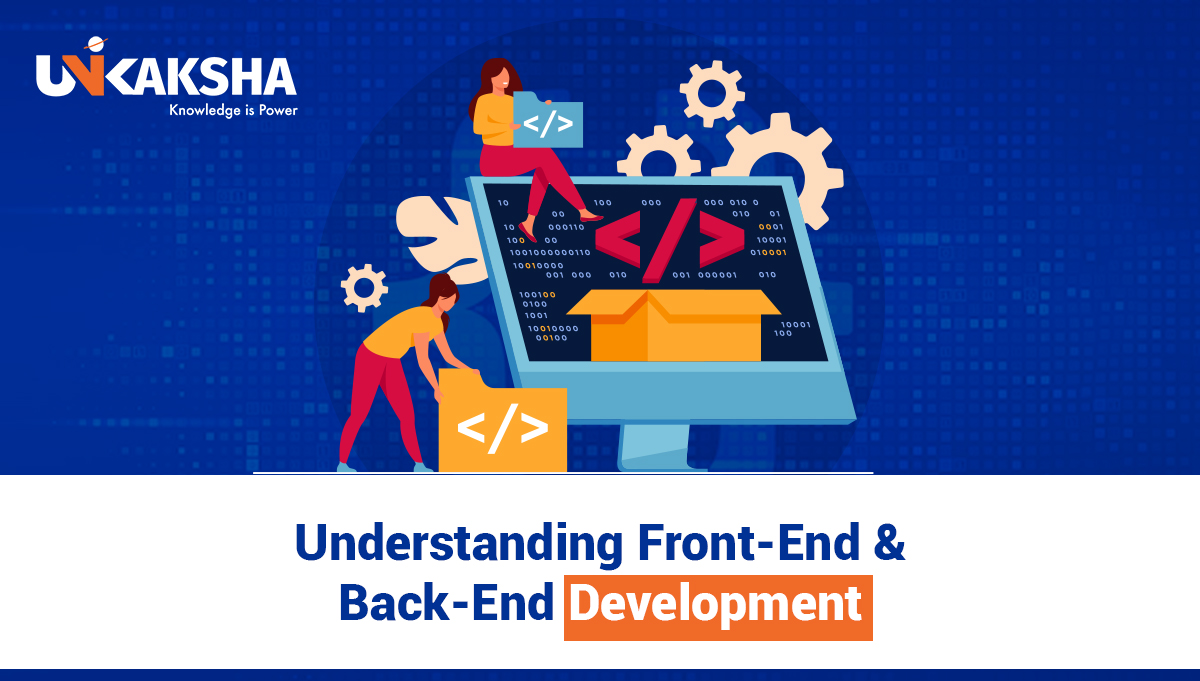By Tarun kumar | Last Updated : September 15, 2022
Often, you might hear the terms “front end” and “back end” mentioned in reference to programming. Both frontend and backend development play essential roles in web development. In layman’s terms, the “front end” is the part of a program or application that users see when using it. In the “back end,” programmers create processes to ensure those interactions are smooth.
It’s no secret that these two types of programming are distinct from one another, but they’re also complementary. For a website to function correctly, both must communicate and operate as a single unit. Is one more important than the other? Definitely not. In web development, they both play a significant role.
Wondering how frontend and backend development differ and which is best for you? Read on to know…
Front-end development
Front-end development is responsible for everything a user sees and interacts with on a website. Also known as the ‘client side, it is responsible for the user interface. In addition to the structure, design, and functionality of a site, it also includes all aspects that users directly experience, including text colors and styles, images, graphs and tables, buttons, colors, and navigation buttons.
Common front-end development languages
The most common front-end development languages are HTML, CSS, and JavaScript. These languages are used to create the structure, style, and interactive elements of web applications.
- HTML stands for Hypertext Markup Language and is used to define the structure of web pages.
- CSS stands for Cascading Style Sheets and is used to style the content of web pages.
- JavaScript is used to create interactive elements on web pages.
Some common front-end Jobs
The front-end industry includes developers who have mastered a specific programming language as well as those who possess skills that go beyond such as graphic design & content writing. Other jobs include:
- Front-end developers
- Full stack developers
- HTML developers
- CSS developers
- UI developers
- Web designers
- Front-end SEO experts
Back-end development
As its name suggests, backend development refers to the part of the website that cannot be seen or interacted with. The backend is the portion of software not directly accessible to users. It includes services such as API development, library creation, and working with components of systems without user interfaces.
Common back-end development languages
As back-end programming involves complex procedures like scripting and architecture, it requires more advanced programming languages such as Java, PHP, and Python.
- Java programming language can be used to create applications for computers, including business applications, Big Data applications, and Android apps.
- Also known as scripting side server language, PHP is designed specifically for the purpose of web development.
- Python programming language is an interpreted, object-oriented, high-level language that can be used for almost anything on a web application.
Some common back-end Jobs
- Full stack developers
- Java developers
- Software Engineers
- Back-end developers
- iOS developers
Should you learn frontend and backend development— any one or both?
It’s important to consider the day-to-day tasks of each if you’re considering learning web development but aren’t sure whether to study frontend or backend.
Work on the front end if you enjoy working with visuals and bringing them to life, creating an excellent user experience. Alternatively, if you love coding challenges, enjoy using more complex programming languages, and are interested in the backend architecture of a website, you may prefer to become a backend developer. In addition, if you have an interest in both the frontend and backend, you might consider pursuing a career in full-stack web development.
By now you should now be able to distinguish between the frontend and backend, and how they work together to create a functional, user-friendly website! Visit Unikaksha’s Techfit Programs & Get #SkillFit if you’re interested in learning web development and perhaps even becoming a full-time, full-stack web developer. The curriculum for the course is designed by industry leaders with extensive domain expertise. Take the first step towards earning your certification, and land a high-paying tech job in your dream company, today!
Sonali Trehon
Blog Author
Sonali is an accomplished Author, Content Writer, Copywriter, and Ghostwriter, known for her ability to create engaging and captivating communications. With over 11 years of experience, she has developed a diverse industry background in Education, Travel, Retail, Events, and Fashion . Quality over quantity is what she firmly believes in. At UniKakhsa, she leads a team of talented technical writers, dedicated to delivering valuable content to readers through our blogs.























































































































































































































































































































































































































































































































































































































































































































































































































































































































































































































































































































































































































































































































































































































































































































































































































































































































































































































































































































































































































































































































































































